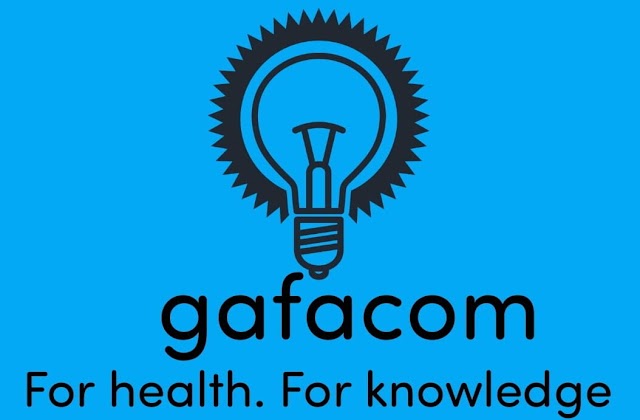Hepatic vein obstruction (Budd-Chiari Syndrome)
Budd-Chiari syndrome is obstruction of hepatic venous outflow that originates anywhere from the small hepatic veins inside the liver to the inferior vena cava and right atrium. Manifestations range from no symptoms to fulminant liver failure.
Factors that predispose patients to hepatic vein obstruction, or Budd-Chiari syndrome, including hereditary and acquired hypercoagulable states, can be identified in 75% of affected patients; multiple disorders are found in up to 45%. Up to 50% of cases are associated with polycythemia vera or other myeloproliferative neoplasms (which entail a 1% risk of Budd-Chiari syndrome).
These cases are often associated with a specific mutation (V617F) in the gene that codes for JAK2 tyrosine kinase and may otherwise be subclinical. Other predispositions to thrombosis (eg, activated protein C resistance [factor V Leiden mutation] [25% of cases], protein C or S or antithrombin deficiency, hyperprothrombinemia [factor II G20210A mutation] [rarely], the methylenetetrahydrofolate reductase TT677 mutation, antiphospholipid antibodies) may be identified in other cases.
Hepatic vein obstruction may be associated with caval webs, right-sided heart failure or constrictive pericarditis, neoplasms that cause hepatic vein occlusion, paroxysmal nocturnal hemoglobinuria, Behçet syndrome, blunt abdominal trauma, use of oral contraceptives, and pregnancy.
Some cytotoxic agents and pyrrolizidine alkaloids (Comfrey or “bush teas”) may cause sinusoidal obstruction syndrome (previously known as veno-occlusive disease because the terminal venules are often occluded), which mimics Budd-Chiari syndrome clinically.
Sinusoidal obstruction syndrome may occur in patients who have undergone hematopoietic stem cell transplantation, particularly those with pretransplant serum aminotransferase elevations or fever during cytoreductive therapy with cyclophosphamide, azathioprine, carmustine, busulfan, etoposide, or gemtuzumab ozogamicin or those receiving high-dose cytoreductive therapy or high-dose total body irradiation. In India, China, and South
Africa, Budd- Chiari syndrome is associated with a poor standard of living and often the result of occlusion of the hepatic portion of the inferior vena cava, presumably due to prior thrombosis. The clinical presentation is mild but the course is frequently complicated by hepatocellular carcinoma.
Symptoms
The symptoms of Budd-Chiari syndrome include:
- Pain in the upper abdomen.
- Ascites (swelling in the abdomen caused by excess fluid).
- Jaundice (skin, whites of the eyes and mucous membranes turn yellow).
- Enlarged and tender liver.
- Bleeding in the esophagus.
- Edema (swelling) in the legs.
- Liver failure.
- Hepatic encephalopathy (reduced brain functioning caused by liver disease).
- Vomiting.
- Enlarged spleen.
- Fatigue (extreme tiredness).
Diagnosis
The presentation is most commonly subacute but may be fulminant, acute, or chronic. Clinical manifestations generally include tender, painful hepatic enlargement, jaundice, splenomegaly, and ascites. With chronic disease, bleeding varices and hepatic encephalopathy may be evident; hepatopulmonary syndrome may occur.
Hepatic imaging studies may show a prominent caudate lobe, since its venous drainage may be occluded. The screening test of choice is contrast-enhanced, color, or pulsed-Doppler ultrasonography, which has a sensitivity of 85% for detecting evidence of hepatic venous or inferior vena caval thrombosis.
MRI with spin-echo and gradient-echo sequences and intravenous gadolinium injection allows visualization of the obstructed veins and collateral vessels. Direct venography can delineate caval webs and occluded hepatic veins (“spider-web” pattern) most precisely.
Percutaneous or transjugular liver biopsy in Budd-Chiari syndrome may be considered when the results of noninvasive imaging are inconclusive and frequently shows characteristic centrilobular congestion and fibrosis and often multiple large regenerative nodules. Liver biopsy is often contraindicated in sinusoidal obstruction syndrome because of thrombocytopenia, and the diagnosis is based on clinical findings.
Treatment
Ascites should be treated with salt and fluid restriction and diuretics. Treatable causes of Budd-Chiari syndrome should be sought. Prompt recognition and treatment of an underlying hematologic disorder may avoid the need for surgery; however, the optimal anticoagulation regimen is uncertain, and anticoagulation is associated with a high risk of bleeding, particularly in patients with portal hypertension and those undergoing invasive procedures.
Low-molecular-weight heparins are preferred over unfractionated heparin because of a high rate of heparin-induced thrombocytopenia with the latter.
Infusion of a thrombolytic agent into recently occluded veins has been attempted with success.
Defibrotide, an adenosine receptor agonist that increases endogenous tissue plasminogen activator levels, has been approved by the FDA for the prevention and treatment of sinusoidal obstruction syndrome. The drug is given as an intravenous infusion every 6 hours for a minimum of 21 days. Serious adverse effects include hypotension and hemorrhage; the drug is expensive and has no benefit in severe sinusoidal obstruction syndrome.
TIPS placement may be attempted in patients with Budd-Chiari syndrome and persistent hepatic congestion or failed thrombolytic therapy and possibly in those with sinusoidal obstruction syndrome. Late TIPS dysfunction is less frequent with the use of polytetrafluoroethylene-covered stents than uncovered stents. TIPS is now preferred over surgical decompression (side-to-side portacaval, mesocaval, or mesoatrial shunt), which, in contrast to TIPS, has generally not been proven to improve long-term survival. Older age, a higher serum bilirubin level, and a greater INR predict a poor outcome with TIPS.
Balloon angioplasty, in some cases with placement of an intravascular metallic stent, is preferred in patients with an inferior vena caval web and is being performed increasingly in patients with a short segment of thrombosis in the hepatic vein.
Liver transplantation can be considered in patients with acute liver failure, cirrhosis with hepatocellular dysfunction, and failure of a portosystemic shunt, and outcomes have improved with the advent of patient selection based on the MELD score.
Patients with Budd-Chiari syndrome often require lifelong anticoagulation and treatment of the underlying myeloproliferative disease; antiplatelet therapy with aspirin and hydroxyurea has been suggested as an alternative to warfarin in patients with a myeloproliferative disorder.
For all patients with Budd-Chiari syndrome, a poor outcome has been reported to correlate with Child-Pugh class C and a lack of response to interventional therapy of any kind.
%20(8).jpeg)





0 Comments